CCNA Discovery 4 is supported by one or more of the following NETLAB+ pods:
The supported lab list (below) provides a list of CCNA Discovery 4 compatible labs and the pod types that can be used for each lab.
To enable the CCNA Discovery 4 labs, create a class and check the appropriate global labs in the class settings as described in the table below, depending on the pod(s) that will be used.
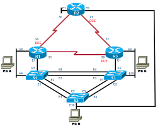
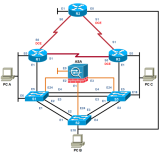
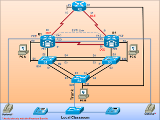
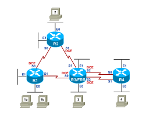
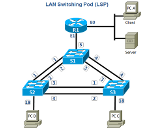
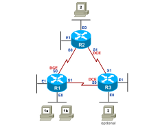
| Pods | Global Labs | Instructions |
|---|---|---|
|
Cuatro Router Pod and/or Basic Router Pod v2 and/or LAN Switching Pod and/or Basic Switch Pod v2 |
AE CCNA DIS 4 V4.0.2.0 English | On the "Global Labs" section of the class settings, check "AE CCNA DIS 4 V4.0.2.0 English" if the CRP and/or the BRPv2 and/or LSP and/or BSPv2 will be used to perform the labs. |
| Multi-purpose Academy Pod | AE CCNA DIS 4 V4.0.2.0-MAP-English | On the "Global Labs" section of the class settings, check the "AE CCNA DIS 4 V4.0.2.0-MAP-English" if the MAP will be used to perform the labs. |
| Multi-purpose Academy Pod w/ASA | AE CCNA DIS 4 V4.0.2 -MAP/ASA- English | On the "Global Labs" section of the class settings, check the "AE CCNA DIS 4 V4.0.2 -MAP/ASA- English" if the MAP w/ASA will be used to perform the labs. |
|
(Cuatro Router Pod and/or Basic Router Pod v2 and LAN Switching Pod and/or Basic Switch Pod v2) and (Multi-purpose Academy Pod and/or (Multi-purpose Academy Pod w/ASA |
AE CCNA DIS 4 V4.0.2.0 English and (AE CCNA DIS 4 V4.0.2.0-MAP-English and/or AE CCNA DIS 4 V4.0.2 -MAP/ASA- English) |
On the "Global Labs" section of the class settings, check both the "AE CCNA DIS 4 V4.0.2.0 English" and ("AE CCNA DIS 4 V4.0.2.0-MAP-English" and/or AE CCNA DIS 4 V4.0.2 -MAP/ASA- English") if the (CRP and/or BRPv2 and/or LSP and/or BSPv2) and the (MAP and/or MAP w/ASA) will be used to perform the labs. |
You may also allow the class to make "pod-only" reservations using the pod types listed above. To enable pod-only reservations, check the box in the class settings for the appropriate pod type. Options include:
These reservations are not tied to specific lab exercises. Therefore, the pod will be configured using the default network configuration. Please note however, not all CCNA labs use the default network configuration and must be completed by selecting the correct lab exercise (see the following discussion).
Always select the correct lab exercise for the lab being performed. Students or teams should schedule the correct lab exercise from the catalog. NETLAB+ will only show those labs for which the required pod type is available. A lab that works on different pod types may appear more than once if your system is so equipped. Instructors should select the correct lab from the Exercise tab during instructor-led lab reservations. This can be done as many times as needed during the reservation.
Importance of Choosing the Correct Lab Exercise
Several of the labs may differ from the standard pod topologies. This is handled by NETLAB+ Dynamic VLAN Mapping technology. Always select the correct lab exercise for the actual lab. This insures that NETLAB+ will set up VLANs on the control switch such that lab devices and PCs are placed in the correct LAN segment for the exercise being performed. Selecting the correct exercise will also make the completed lab output easier to find in the archive.
| Lab | Description | Pod Required | Comments |
|---|---|---|---|
| 1.3.4 | Creating an ACL | MAP, MAP w/ASA or LSP | |
| 1.4.3 | Monitoring VLAN Traffic | Lab not supported | |
| 1.4.6A | Gaining Physical Access to the Network | MAP, MAP w/ASA, CRP or BRPv2 | |
| 1.4.6B | Implementing Port Security | Lab not supported | |
| 2.1.6 | Observing Traffic Using Cisco Network Assistant | Lab not supported | |
| 2.5.2 | Monitoring Network Performance | Lab not supported | |
| 3.2.2 | Using show version to Create an Inventory List | MAP, MAP w/ASA, CRP or BRPv2 | |
| 3.2.4 | Installing a Cisco IOS Software Image | MAP, MAP w/ASA, CRP or BRPv2 | |
| 3.2.5 | Observing the Router Startup Process | MAP, MAP w/ASA, CRP or BRPv2 | |
| 3.3.2 | Determining the Router Hardware Options | MAP, MAP w/ASA, CRP or BRPv2 | |
| 3.4.3 | Performing a Wireless Site Survey | Lab not supported | |
| 4.1.2 | Characterizing Network Applications | [MAP, MAP w/ASA,CRP or BRPv2]1 or LSP | |
| 4.2.3 | Analyzing Network Traffic | LSP | |
| 4.3.4 | Exploring Network QoS | [MAP, MAP w/ASA, CRP or BRPv2]1 | |
| 4.4.4 | Investigating Video Traffic Impact on a Network | Lab not supported | |
| 4.5.1 | Identifying Traffic Flows | [MAP, MAP w/ASA, CRP, BRPv2]1 or LSP | |
| 4.5.2 | Diagramming Internet Traffic Flows | MAP, MAP w/ASA or LSP | |
| 4.5.3 | Diagramming Traffic Flows to and from Remote Sites | CRP1 | |
| 4.5.4 | Diagramming External Traffic Flows to and from Remote Sites | CRP1 | |
| 4.5.5 | Diagramming Extranet Traffic Flows | CRP1 | |
| 5.5.3 | Developing ACLs to Implement Firewall Rule Sets | CRP1 | |
| 6.1.4 | Using CIDR to Ensure Route Summarization | MAP, MAP w/ASA, CRP or BRPv2 | |
| 7.1.6 | Analyzing a Test Plan and Performing a Test | LSP or NFP | |
| 7.2.5 | Testing the Film Company Network | Lab not supported | |
| 7.3.2 | Creating a Server Farm Test Plan | MAP, MAP w/ASA or LSP | |
| 7.3.3 | Configuring and Testing the Rapid Spanning Tree Prototype | MAP, MAP w/ASA, LSP or BSPv2 | |
| 7.3.5 | Testing a Prototype Network | MAP, MAP w/ASA or LSP | |
| 8.1.3 | Simulating WAN Connectivity | MAP, MAP w/ASA, CRP or BRPv2 | |
| 8.2.2 | Creating a WAN Connectivity Test Plan | CRP | |
| 8.2.5 | Configuring and Verifying WAN Backups Links | CRP | |
| 8.2.6 | Evaluating the Prototype Test | CRP | |
| 8.3.2 | Creating a VPN Connectivity Test Plan | MAP, MAP w/ASA, CRP, BRPv2 or LSP | Please see the list of required software |
| 8.3.4a | Creating a Cisco EasyVPN Server (Optional Lab) | MAP, MAP w/ASA, CRP or BRPv2 | Please see the list of required software |
| 8.3.4b | Configuring and Testing the VPN Client (Optional Lab) | MAP, MAP w/ASA, CRP or BRPv2 | Please see the list of required software |
1The Discovery Server is replaced by a regular router for the HTTP and Telnet services. The lab steps may vary slightly.
In order to do the CCNA Discovery 4 labs, certain software must be installed on the PCs. The following is a list of the required software. If possible, we suggest preloading all of the installer executable files for the software on the list.
| Software Name | Purpose | Requirements | Comments / Links |
|---|---|---|---|
| Secure Device Manager (SDM) | The SDM is installed onto the router's flash memory or in the PCs. |
Supported Microsoft Windows O/S:
|
For using SDM, the web browser requires SUN JRE 1.4 or later and
ActiveX control must be enabled. www.cisco.com |
| Cisco VPN Client | This software is used to build a VPN. | www.cisco.com |
The labs in the following list are paper-based, and do not require NETLAB+ access .
| Lab | Description |
|---|---|
| 1.4.5 | Identifying Network Vulnerabilities |
| 2.1.3 | Creating a Project Plan |
| 2.3.2 | Creating a Network Organization Structure |
| 2.3.3 | Prioritizing Business Goals |
| 2.4.1 | Establishing Technical Requirements |
| 2.4.2 | Identifying Organizational Constraints |
| 2.5.3 | Investigating Network Monitoring Software |
| 3.1.2 | Creating a Logical Network Diagram |
| 3.4.1 | Preparing for a Site Survey |
| 3.5.2 | Creating an Overall Project Goal |
| 3.5.3 | Creating a Scope Statement |
| 3.5.4 | Developing Network Requirements |
| 3.5.5 | Analyzing an Existing Network |
| 3.2.3 | Using Feature Navigator |
| 4.3.3 | Prioritizing Traffic |
| 5.1.1 | Applying Design Constraints |
| 5.1.2 | Identifying Design Strategies for Scalability |
| 5.1.3 | Identifying Availability Strategies |
| 5.1.5 | Identifying Security Requirements |
| 5.2.3 | Designing the Core Layer |
| 5.2.4 | Creating a Diagram of the Film Company LAN |
| 5.4.2 | Selecting Access Points |
| 6.2.1 | Determining an IP Addressing Scheme |
| 6.2.2 | Determining the Number of IP Networks |
| 6.2.5 | Creating an Address Allocation Spreadsheet |
| 6.2.6 | Diagramming the Network |
| 7.2.2 | Creating a Test Plan for the Campus Network |
| 7.2.6 | Analyzing Results of Prototype Tests |
| 7.3.6 | Identifying Risks and Weaknesses in the Design |
| 9.1.2 | Editing and Organizing the Existing Information |
| 9.2.1 | Creating and Implementing Plan |
| 9.2.2 | Creating a Phased Installation Plan |
| 9.2.4 | Creating an Installation Schedule |
| 9.3.4 | Creating the Bill of Material |
| 9.4.1 | Compiling the Documentation |
| 9.4.2 | Presenting the Project Proposal |
| 10.0.2.2 | Finding the Right Networking Job |